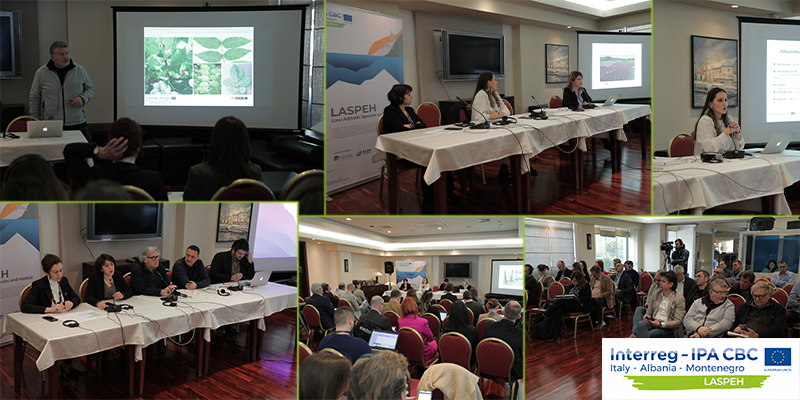
PI for national parks of Montenegro, in collaboration with project partners, successfully implemented a crossborder workshop which 45 relevant institutions representatives necessary for implementation of the Transnational Joint Strategy for conservation priority species and habitat participated in.
The crossborder workshop, held in Petrovac (Montenegro) on 15th of February, was participated by 4 university, 15 protected habitat, 4 municipality services for conservation of biodiversity, 13 governmental bodies and agencies, and 9 NGO representatives.
The aim of the workshop was to present species and habitat in Montenegro, Albania, and region Puglia (Italy) which can be targeted by the methodology developed as a result of LASPEH Project implementation in the previous period. The Transnational Joint Strategy for conservation of priority species and habitat was presented by eminent experts from the field of environment protection, as well as the common types of species and habitats in the cross-border territory.
In the introductory part all project partners presented achieved results in conservation practices, especially those concerning preservation of Natura 2000 species and habitat.
Project partners had the opportunity to welcome national contact point Slađana Pešić who presented the possibilities within new Interreg IPA CBC program “South Adria” with a special notion of priority axis 2 “Greener Europe” which concerns conservation of biodiversity and management of ecological risks.
The workshop was structured with 3 panels out of which the first one was dedicated to strategic planning of conservation measures in cross border area; the second to cross border cooperation with the goal of better preservation of species and habitat, and the third one to enhanced conservation methodology for Natura 2000 habitat.
During the first panel discussion participants had the opportunity to see the importance of joint strategic planning and conservation measures on the example of invasive quarantine pests which represent danger for the program area, which was presented by professor Francesco Porcelli from University of Bari. Holta Çopani, from the Agency for Protected Area in Albania, presented conservation priorities and strategic plans in Albania and highlighted the importance of preservation of Pelophylax shqipericus and other species common to the program area. The first panel was complemented by presentations of Ivana Džaković and Maša Vučinić who presented the system of annual programming and planning in PI for national parks of Montenegro and put focus on conservation of numerous Natura 2000 habitats in Montenegro. The importance of preservation of Edraianthus wettsteinii subsp. lovcenicus, a local endemic species, was highlighted, along with habitat where Narthecium scardicum is located.
During the second panel, dedicated to discussing the possibilities of implementing the Transnational Joint Strategy, Marco Dadamo presented strategic planning and conservation measures of Regional Natural Parc Mar Piccolo. Vilma Pireli from the University of Shkodra "Luigj Gurakuqi" talked about possibilities of implementing of tools developed as a result of LASPEH Joint Transnational Strategy for conservation of Caretta caretta with a special focus on preservation of this species nesting area. Ivana Džaković spoke about Marsilea Quadrifolia which was noticed for the first time in 68 years and which requires special partnership effort in conservation.
The third panel was dedicated to new enhanced conservation methodology with a focus on Natura 2000 habitat during which three types of habitat were discussed: joint coastal habitat (Marko Dadamo - Regional Natural Park Mar Piccolo), lake habitat (Nevila Bushati - University of Shkodra "Luigj Gurakuqi"), and forest habitat (Slobodan Stijepović - PI for national parks of Montenegro).
All project partners and speakers came to the common conclusion that existing conservation tools, methodologies and the Strategy are widely applicable to numerous common habitats and species.

